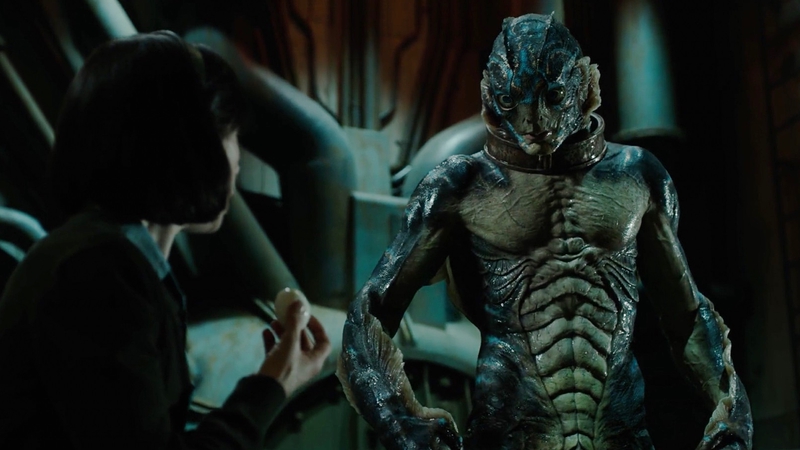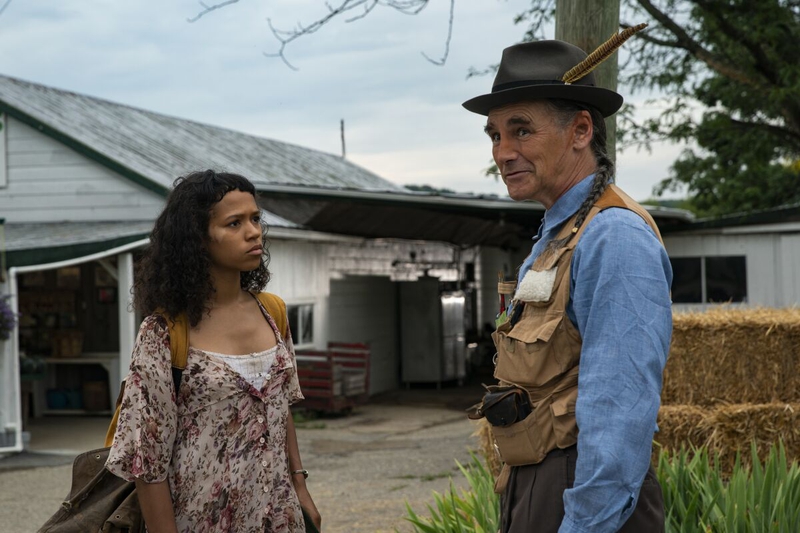The relationship between romance and horror is, as I've written, one of mutual co-creation; tensions eternally bound up with one another. Easier though it may be to recognize the horrors produced by a romanticized worldview, genuine romance blossoms from the muck of such horror: the roses that thrive on blood. Who(/what) we become after surrendering to love, desire, and romance's inevitable destruction.
In Skin Shows: Gothic Horror and the Technology of Monsters, Jack Halberstam posits that the monster functions as a form of cultural technology whose composition and aestheticization signifies the "nonhuman" to generate- and oftentimes, complicate- the human. Romance functions much in the same way as the vehicle through which the human is signified in opposition to the non- or inhuman. It's not merely the character(s) we're meant to root for but the ideals they symbolically represent.
I distinguish this movement in "The Horror of Romance" using Creature From the Black Lagoon and how romance works to propel its anti-miscegenation themes. But the power of horror is in its malleability; the "technology" in "the technology of monsters." This power is precisely what makes it the perfect modality to challenge such ideals, and for this reason, the romantic elements that have always existed in horror don't always mirror the versions presented by your standard rom-com (and thank Lilith for that).

The Addams Family, The Munsters, and now, Wednesday all re-present the sitcom family in horror dressing, a movement which brings "margin to center" in such a way that challenges and plays with the constitutions of the "normal," the monstrous, and the romantic. Setting aside the married couples in these properties who actually like each other and express those feelings freely, the vision of family life- of social life in general- they present romanticizes and exalts difference rather than pathologizing and rejecting it. To be clear, this is not to say the monstrous does not exist in these worlds. Rather, the constitution of the monster, what is considered monstrous, falls along a different axis.
Before The Addams and The Munsters were the carnival sideshow performers of Tod Browning's 1932 film, Freaks. Adapted by Ryan Murphy in American Horror Story: Freak Show, the film centers on a community of outcasts, perceived monsters whose lives take place at the literal margins of society. Though the story undoubtedly reveals the horror of romance, it ultimately romanticizes the power born when one chooses to nurture and protect relationships that affirm rather than exploit. Which is to say, it romanticizes resistance to that which seeks to destroy you.

Almost a century later, Nikyatu Jusu's Nanny accomplishes a similar movement. Historically, B/blackness- like disability, the dominant visual cue for Other- has been made synonymous with abjection, violence, and monstrosity, an inclination Jusu rejects outright while still presenting a horror film that complicates conceptions of the monstrous. Aisha is a Senegalese educator and mother who takes a nanny position with a wealthy Manhattan couple after immigrating to the US. Her singular goal is to put together enough money to establish a life and reunite with her own son, though her employers have other ideas.

The luxury Tribeca apartment where much of the film takes place is presented as a space of terror in direct contrast to the salons, backyard parties, and homes-that-actually-feel-like-homes where Aisha finds relief in the company of other Black folks. Visually stunning, the camera's gaze actively romanticizes Black culture, Black space, and Black people as a kind of heaven beyond the haunted house of hyper modernity.
Three love stories propel the film's narrative arc: Aisha's love for her son, for herself, and for Malik, her future incarnate. When the real horror eventually reveals itself, the moment is gut-wrenching, to say the absolute least. But ultimately, its horror gives way to the romance that exists in all the ways we are destroyed, transformed, and reborn through love.
The romance of transformation is a major theme in horror. While projects like The Fly illuminate the horror of romance through its grotesquery and gore, Warm Bodies turns this formula inside out to demonstrate instead how horror can create the perfect conditions for romance.

Romeo & Juliet with a Beauty And The Beast spin, the film resituates these classics in the context of a post-zombie apocalypse landscape with the added bonus of a zombie narrator who falls in love with a surviving human girl…while still a zombie. Blank affect, rotting corpse, flesh eating, and all. The film's arc sees R return to his humanity ostensibly through his love for Julie, the impact of which doesn't just change him but ripples out to other zombies. In the end, their love for one another literally ends the apocalypse.
Now, like other romance-forward properties, it's almost irresistibly easy to engage this film in bad faith. But there is something to be said about love being the impetus toward wide-scale social change. Love and romance are erotic energies, which is to say, they're generative energies—energies that propel us toward production, though I don't mean this in the capitalist sense of the word. Rather, the way your garden is produce(d), how a play put on by children for their parents' amusement is still a production.
In "Uses Of The Erotic," Audre Lorde attests to the power of eroticism; identifies it as a "resource," a "replenishing and provocative force," "an internal sense of satisfaction," "creative energy," "an assertion of…lifeforce." Once such energy is sparked, it expands and projects outward. Lorde writes, "Recognizing the power of the erotic within our lives can give us the energy to pursue genuine change within our world, rather than merely settling for a shift of characters in the same weary drama."

Though Warm Bodies illustrates the power of the erotic, its impact is fairly limited for its hegemonically safe cast of characters. Guillermo del Toro's The Shape Of Water, by contrast, challenges the prescriptive nature of eroticism, desirability, and power in its (unofficial) reclamation and revision of Creature From The Black Lagoon.
Much has been written on the relationship between the two films though it's Black Lagoon's 1955 follow-up, Revenge Of The Creature, that The Shape Of Water bears a closer resemblance to. Christopher Stewardson identifies and explores the structural and thematic similarities between the two films, each of which sees the Gill Man/Amphibian Man captured from a natural habitat in South America only to be imprisoned as an experiment subject and tortured. But Stewardson also recognizes the sympathy expressed by Revenge Of The Creature's heroine, Helen, toward the Gill Man; what he describes as "the emotional groundwork…Del Toro fleshes out in The Shape Of Water." And flesh it out, he does.
Elisa Esposito is the heroine of Del Toro's film, a mute custodian who works at the Cold War government lab where the Amphibian Man is incarcerated. Both because of and despite their difference, Elisa and the Amphibian Man develop a bond that deepens over the film's course into a love that culminates in one of the most provocative sex scenes of at least the last decade (and perhaps maybe ever).
Folks can barely handle sex between humans without getting weird in a veritable smorgasbord of ways, a fact the original Creature From The Black Lagoon evidences by its very existence. Del Toro knows this, but before he is anything else, the man is a romantic. The tragedy of the Gill Man- what makes him so sympathetic as a monster- comes down to an acute absence of love. He's not a Bad Person Who Deserves Mistreatment. He's an extension of the natural world—as we all are.
In Belly Of The Beast: The Politics of Anti-Fatness as Anti-Blackness, Da'Shaun L. Harrison describes the order of the world as such: "to be Ugly is to be a Monster; to be a Monster is to be the Slave; to be the Slave is to be the Other; to be the Other is to be unDesirable; to be unDesirable is to be the Beast."
The deconstruction and rejection of this order is the source of romance in The Shape Of Water (as in Nanny, as in Freaks): the notion that real love, real eroticism, and real desire exist amongst and for the ugly, the monstrous, the enslaved, the othered, the undesirable. And perhaps this eroticism can be deeper, more complex, and more profound than what we've been led to imagine is possible.

Jeffrey Jerome Cohen attests that "the monster polices the borders of the possible." If Creature From The Black Lagoon restricts those borders, The Shape Of Water expands them. Not only is the Amphibian Man capable of being a romantic subject, Elisa is the one transformed by her love for him, which is to say, she's transformed by her embrace of the monster. The film does not treat this as a punishment or warning, but as the happiest of happy endings.

Most recently, Luca Guadgagnino similarly challenged audiences with cannibal romance, Bones And All, which takes an altogether different approach to romantic horror. Bones And All explores the eroticism of hunger, not just how it mirrors sexual tension but desire in all its forms.
When Maren's father unexpectedly abandons her, she sets out in search of the mother she's never known, for whom she has imperative questions about herself and her previously unspeakable appetites. On the road, she meets Sully, an older "eater" who tutors her in the ways of cannibal life but who she quickly abandons, and Lee, with whom she falls in love. Together, they confront and struggle with the morality, horror, and tragedy of their existence, but born of that confrontation is all the beauty and romance that blossoms from the depth of mirroring between them.

At one point, they learn it's something of a rite of passage when an eater has their first "full bones," a transformative experience that- though we don't know it yet- Lee's already had, but Maren hasn't. However ill-fated their lives seem, Maren and Lee surrender to love anyway, allowing themselves to "be like people"- one's capacity for love again qualifying their humanity- until Sully comes for Maren. It's worth noting these scenes of violence are as intimate as the scenes of tenderness between Maren and Lee. The moment is climactic for all of them.
Hélène Cixous writes in "Love of the Wolf" that "eating and being eaten belong to the terrible secret of love. We love only the person we can eat. The person we hate we 'can't swallow'.... Because loving is wanting and being able to eat up and yet to stop at the boundary."

Sully's want is denied, so he attempts to fulfill this desire by force. In so doing, he destroys himself and the two lovers. Dead or alive, Maren doesn't want him inside her. But when Lee expresses his desire for her to eat him, it's an offer of something else entirely, a type of communion some theologies consider adjacent to divinity.
The truth of love, desire, and romance is that they all stem from the eroticism of hunger: of longing, craving the Other's absorption into the Self. But there is also extraordinary terror in this, and what delineates the difference ultimately comes down to consent. Lee's desire to be consumed by Maren is romantic because of his desire to nurture her, to be part of her, to eliminate the boundaries of flesh between them. "La petite mort" has never been rendered so viscerally. What transpires transcends its horror and becomes romantic precisely because it's a mutually devotional act.
It's not a risk but a fact that whatever you love, whatever you idealize, the truth of desire is that it will rip your fucking heart out. The romance is in what you become and create together after it does.






